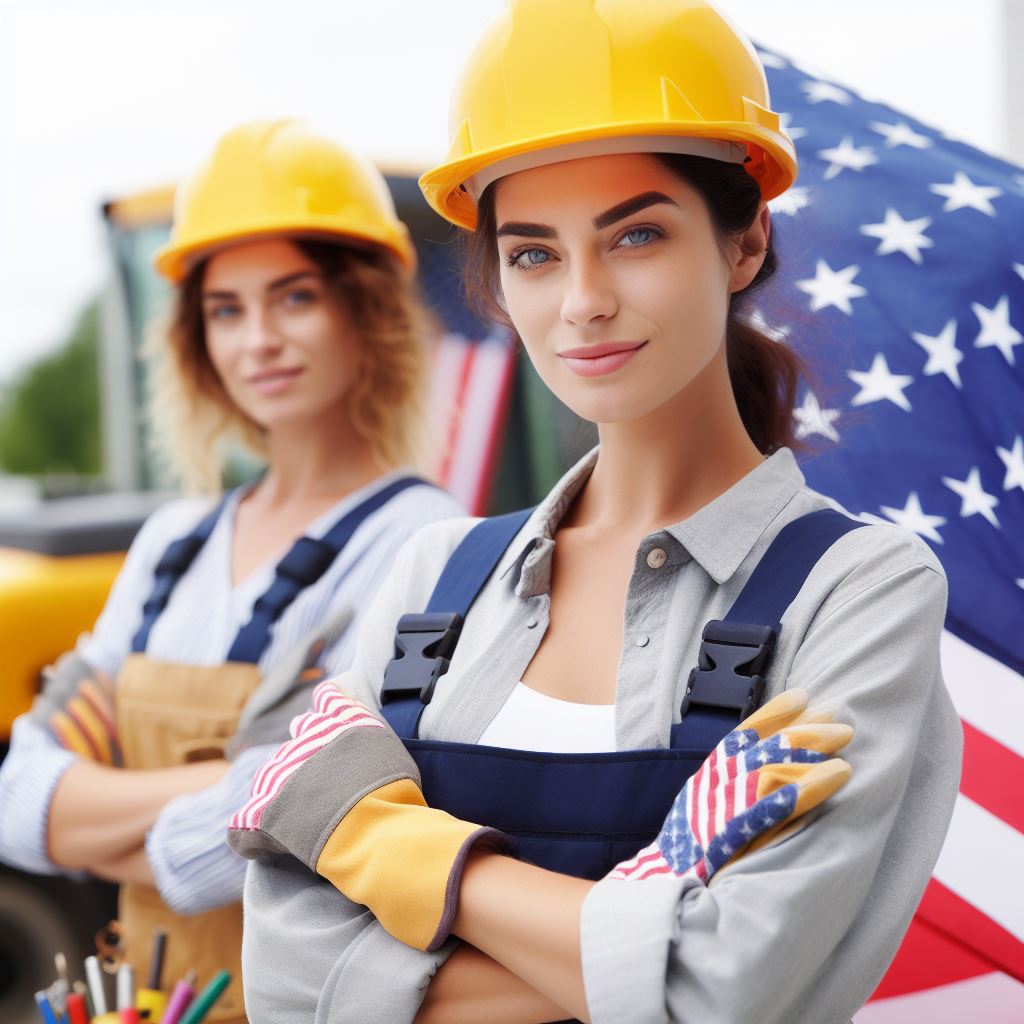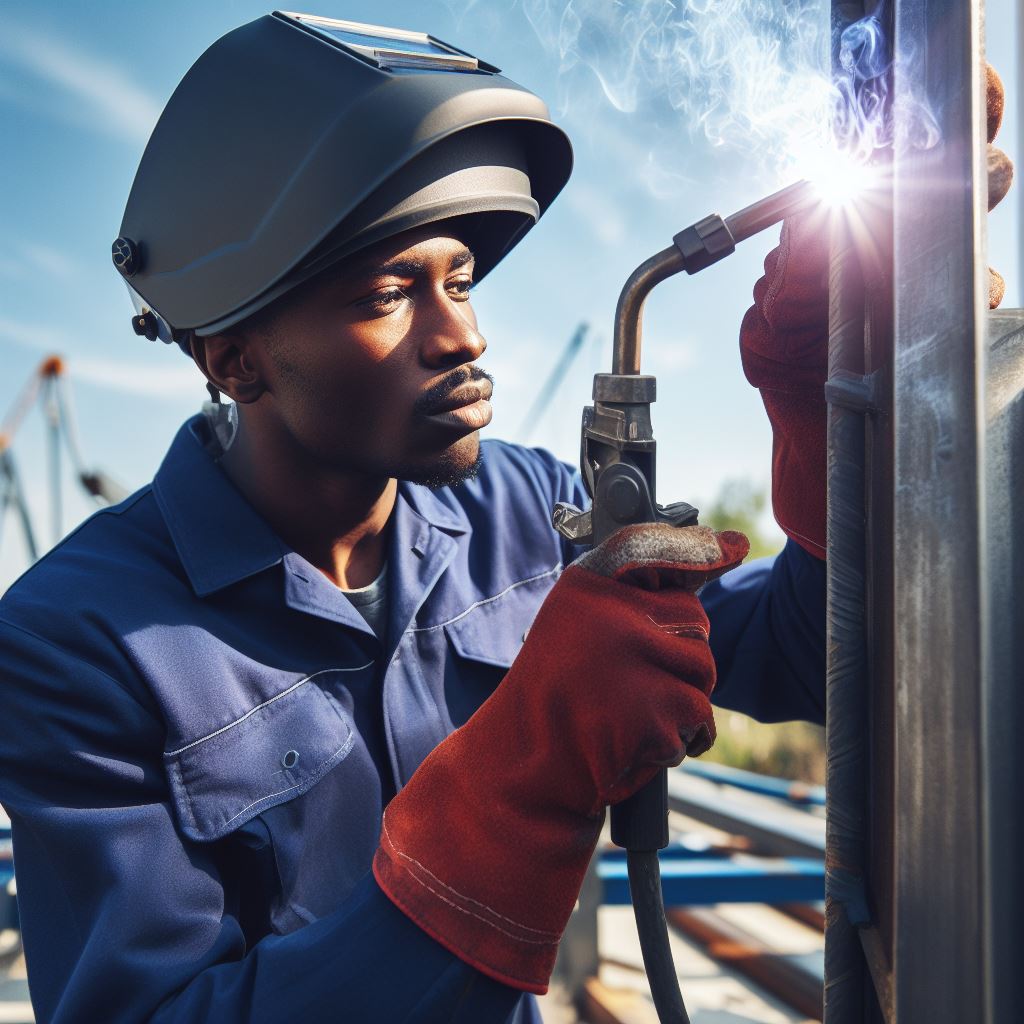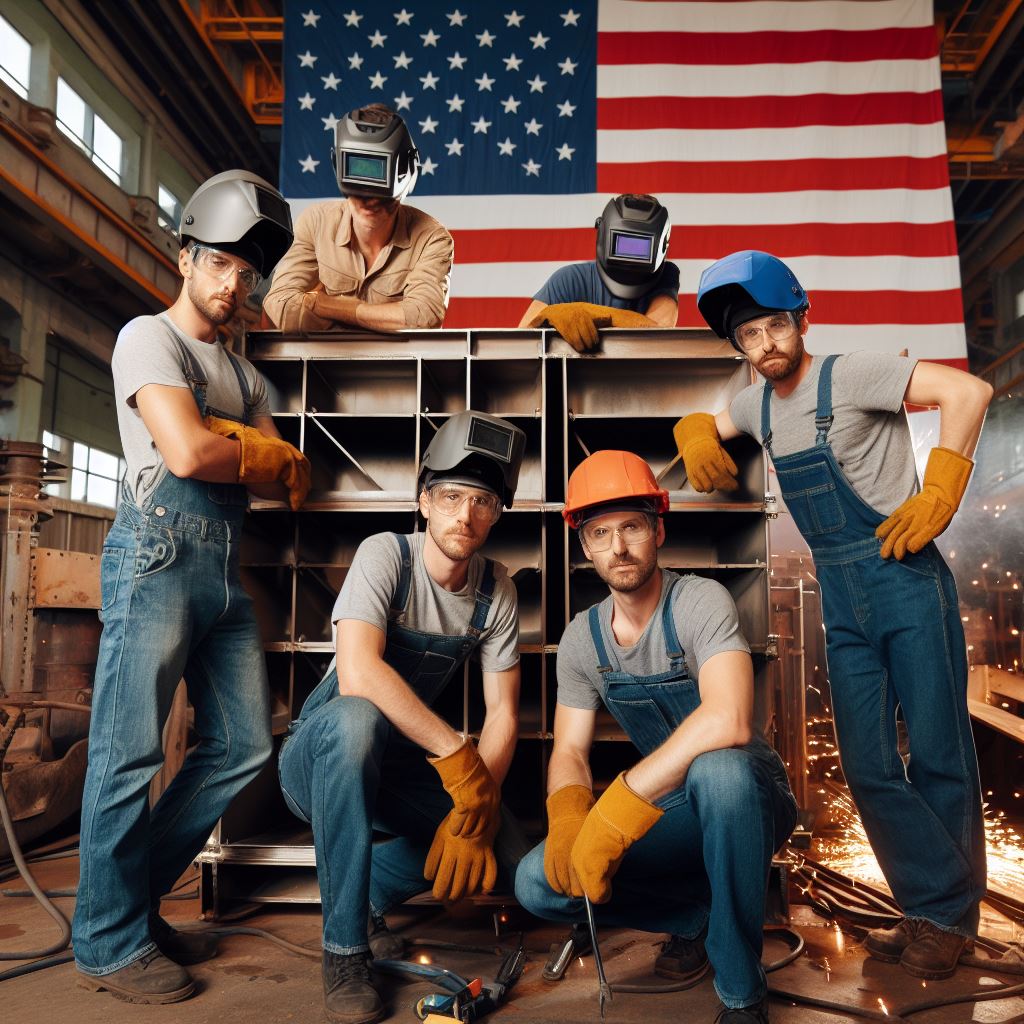Introduction
The construction industry, being a significant contributor to the economy, holds immense importance in the United States.
From building infrastructure to creating jobs, this sector plays a pivotal role in the nation’s development.
However, there is a pressing issue that needs attention: the underrepresentation of women and minorities within the industry.
Diversity encompasses the inclusion of individuals from different backgrounds, including gender, ethnicity, and race.
It is essential in any industry, as it brings a fresh perspective, fosters creativity, and encourages innovation.
Moreover, a diverse workforce is more reflective of society and can mitigate systemic biases.
Unfortunately, the construction industry has struggled to embrace this concept fully.
Women and minorities remain severely underrepresented in the US construction industry.
Despite advancements made in other fields, women and minority groups continue to encounter significant barriers to entry and advancement within this industry.
The lack of representation not only hinders diversity but also perpetuates inequality and restricts the industry’s growth potential.
This section aims to shed light on the issue of underrepresentation of women and minorities in the US construction industry.
By examining the reasons behind this disparity and exploring potential solutions, we can strive towards creating a more inclusive and diverse construction workforce.
Through greater representation and equal opportunities, we can unlock the full potential of the industry and pave the way for a prosperous future.
Historical Perspective
Overview of the historical lack of diversity in the construction industry
- Traditionally, the construction industry has been predominantly male and lacked diversity in terms of gender and ethnicity.
- Women and minorities have faced significant barriers and discrimination when trying to enter the field.
- The lack of diversity is not only an issue of social injustice but also hampers innovation and growth in the industry.
- The construction industry has been slow to adapt to changing societal norms and embrace diversity.
- Statistics show that women and minorities continue to be underrepresented in construction jobs.
Societal factors that contributed to the exclusion of women and minorities
- Pervasive stereotypes and biases have perpetuated the belief that construction is a male-dominated field.
- Historically, societal norms relegated women to domestic roles, limiting their opportunities in non-traditional industries like construction.
- Racial and ethnic prejudices also played a significant role in excluding minorities from construction jobs.
- The construction industry’s culture and work environment, which have often been unwelcoming and hostile for women and minorities.
- Lack of access to education and training opportunities for women and minorities, further hindering their entry into the industry.
Relevant legislation or policies aimed at promoting diversity in the industry
- The Civil Rights Act of 1964 prohibited employment discrimination based on race, color, religion, sex, or national origin
- Affirmative Action policies have been implemented to address historical inequalities and promote equal opportunity in the construction industry.
- The Women in Apprenticeship and Nontraditional Occupations (WANTO) Act of 1992 encourages the inclusion of women in apprenticeship programs.
- Several states have introduced legislation mandating diversity requirements in public construction projects.
- Organizations and industry associations have initiated programs to promote diversity, including mentoring and scholarship opportunities.
In short, the historical lack of diversity in the construction industry has been a persistent issue.
Stereotypes, societal norms, and discriminatory practices have excluded women and minorities from fully participating in this field.
However, legislation, policies, and initiatives aimed at promoting diversity have sought to address these challenges and create a more inclusive industry.
Continued efforts are necessary to ensure equal opportunities for all individuals interested in pursuing careers in construction, regardless of their gender or ethnicity.
Read: Navigating Challenges: The Modern Carpenter’s Toolkit
Current State of Affairs
Representation of Women and Minorities in the US Construction Industry
- Women make up only 10.3% of the construction workforce in the United States.
- Minorities account for approximately 26% of the US construction industry.
- African Americans represent around 6% of the construction workforce.
- Hispanics comprise about 30% of the construction industry
- Asian Americans account for approximately 5% of the construction workforce.
- Native Americans represent less than 1% of the construction industry.
Challenges Faced by Women and Minorities in Entering and Advancing in the Field
- Women and minorities often encounter stereotypes and biases that hinder their career progression.
- Lack of access to mentorship and networking opportunities restricts their professional growth.
- Discrimination, harassment, and hostile work environments significantly impact their advancement.
- Unequal pay and limited promotional opportunities create barriers for women and minorities.
- Inadequate representation in leadership roles diminishes their influence and decision-making power.
- Institutionalized barriers and biases within the industry perpetuate unequal opportunities.
Possible Reasons Behind the Underrepresentation
- Construction careers traditionally prioritize physical strength and technical skills, reinforcing stereotypes.
- Women and minorities face exclusion due to historical biases.
- Limited exposure and educational resources discourage their interest.
- Preconceptions about the work environment deter their entry.
- Unconscious biases in hiring perpetuate preferential treatment.
- Lack of diversity initiatives maintains underrepresentation in companies.
The US construction industry’s diversity situation presents a mixed picture.
Despite efforts, women and minorities remain substantially underrepresented.
Transform Your Career Today
Unlock a personalized career strategy that drives real results. Get tailored advice and a roadmap designed just for you.
Start NowWomen constitute only 10.3% of the construction workforce.
Minorities, including African Americans, Hispanics, and others, make up around 26%.
Challenges persist for women and minorities in construction.
Stereotypes and biases hinder their entry into the field.
Lack of mentorship and networking opportunities limits growth.
Discrimination, harassment, and unequal opportunities impede progress.
Underrepresentation extends to leadership roles, affecting influence and power dynamics.
The construction industry’s underrepresentation roots in various factors.
Stereotypes linking construction with masculinity undermine women and minorities.
Historical biases and limited exposure reinforce exclusion.
Lack of inclusivity initiatives maintains the status quo.
The representation of women and minorities remains suboptimal.
Challenges persist in entering and advancing in construction.
Overcoming these hurdles requires dismantling stereotypes and fostering inclusivity.
Industry-wide policies and mentorship opportunities should promote diversity and equal opportunities.
Only concerted efforts can foster a truly inclusive construction sector.
Read: Building Codes and Standards: Carpenter’s Compliance Guide

Benefits of Diversity in Construction
Advantages that diversity brings to the construction industry
- Increased creativity and innovation through diverse perspectives.
- Enhanced problem-solving abilities due to a wider range of experiences and knowledge.
- Expanded talent pool leading to a more skilled and qualified workforce.
- Better decision-making processes by considering varied viewpoints and ideas.
- Improved communication and collaboration among team members from different backgrounds.
- Increased adaptability and resilience in dealing with complex projects and challenges.
Diverse perspectives can lead to more innovative solutions and improved productivity
- Unique ideas and approaches are encouraged, fostering out-of-the-box thinking.
- Different cultural perspectives provide fresh insights and alternative approaches to problem-solving.
- Increased diversity encourages constructive debates and fosters a culture of continuous improvement.
- Inclusion of a diverse range of skills and experiences leads to a more efficient and productive work environment.
- Collaboration and mutual learning among diverse team members promote personal and professional growth.
Examples of successful diverse construction projects
- The California Academy of Sciences’ Living Roof project, which incorporated sustainable design practices from various cultural backgrounds.
- The London Crossrail project, which had a diverse workforce representing multiple ethnicities and nationalities.
- The Burj Khalifa in Dubai, where international expertise was utilized to create an iconic architectural masterpiece.
- The Shanghai Tower, a collaboration between multiple international design firms, exemplifying the benefits of cross-cultural partnerships.
- The Transbay Transit Center in San Francisco, which showcases the successful integration of diverse expertise and perspectives.
Read: The Impact of Housing Trends on Carpentry in the USA
Efforts to Promote Diversity in Construction
Initiatives and Organizations
- National Association of Women in Construction (NAWIC) provides resources and support for women in the industry.
- Women in Construction Operations (WiOPS) focuses on advancing women’s careers in operational roles.
- National Association of Minority Contractors (NAMC) advocates for the inclusion of minority-owned businesses.
- Associated General Contractors (AGC) has programs to promote diversity and inclusion in the construction industry.
Programs and Scholarships
- The Tradeswomen Build Nations Conference brings together women interested in construction careers.
- The Construction Industry Workforce Initiative provides scholarships and mentorship for underrepresented groups.
- The National Association of Women in Construction offers scholarships to women pursuing construction-related education.
- The National Minority Supplier Development Council provides resources for minority-owned businesses in the construction sector.
Success Stories and Best Practices
- Promoting diversity in construction is a growing priority, recognizing its benefits.
- Various companies and organizations actively champion diversity.
- Turner Construction fosters diversity via Women’s Resource Group and programs.
- Skanska, a global construction firm, focuses on diversity with set goals.
- Sundt Construction prioritizes diversity and has received awards.
Webcor actively promotes diversity through leadership programs.
Showcase Your Business Today
Reach thousands of readers actively exploring professional services. Publish your business profile and grow your audience now.
Publish NowDiversity benefits the industry, leading to innovative and inclusive environments.
Organizations like NAWIC and WiOPS support and empower women.
NAMC advocates for inclusion of minority-owned businesses.
AGC actively promotes diversity and inclusion within construction.
Programs and scholarships aid entry for women and minorities.
Initiatives like Tradeswomen Build Nations Conference encourage women’s entry.
Scholarships and mentorship foster underrepresented groups’ career growth.
Programs like NAWIC scholarships support women in construction.
The National Minority Supplier Development Council aids minority-owned businesses.
Successful companies like Turner, Skanska, Sundt, and Webcor prioritize diversity.
They reflect diverse communities in their workforce.
Their efforts in diversity result in more innovative and inclusive workplaces.
Efforts in the construction sector to enhance diversity are crucial.
Through various initiatives, organizations, programs, and success stories, the industry progresses.
Read: Master Carpenter: What It Means and How to Achieve It
Overcoming Challenges and Promoting Inclusion
Address the importance of addressing bias and fostering an inclusive work environment
- Bias in the construction industry hinders diversity and restricts the growth potential of individuals.
- Recognizing and addressing bias is crucial to creating an inclusive work environment.
- An inclusive workplace fosters creativity, innovation, and improves overall productivity.
- Bringing in diverse perspectives helps in making better decisions and solving complex problems efficiently.
- To overcome bias, construction companies need to have comprehensive diversity and inclusion policies in place.
- Training programs can help educate employees about unconscious bias and its negative impact.
- Implementing and enforcing policies that prohibit discriminatory behavior can ensure a safe and inclusive work environment.
- Inclusion initiatives should focus on creating equal opportunities for career advancement and pay equity.
Strategies for combating discrimination and creating equal opportunities for all
- Construction companies must actively recruit and hire a more diverse workforce.
- Reviewing and modifying job descriptions and requirements can eliminate biases and attract a wider pool of candidates.
- Implementing blind recruitment processes can help reduce unconscious biases during hiring.
- Establishing diversity committees or task forces can actively work towards improving inclusion efforts.
- Providing diversity training to employees can promote awareness and combat discrimination in the workplace.
- Cultivating an inclusive culture where everyone’s contributions are valued and respected is essential.
- Ensuring that promotion and advancement opportunities are based on merit and not influenced by gender or race.
- Collaborating with community organizations and schools can encourage more women and minorities to consider careers in construction.
- Identifying and addressing pay gaps between genders and ethnicities is crucial for equal opportunities.
Discuss the role of mentorship and leadership in promoting diversity and inclusion
- Mentorship programs can provide underrepresented individuals with guidance and support to navigate the construction industry.
- Senior leaders should serve as role models and actively promote diversity and inclusion within their organizations.
- Creating mentorship opportunities for women and minorities can help them advance in their careers.
- Leadership teams should set diversity goals and hold themselves accountable for achieving them.
- Providing leadership development programs specifically targeted at women and minorities can foster growth and career progression.
- Encouraging employee resource groups can provide a safe space for networking, mentoring, and celebrating diversity.
Future Outlook
A diverse and inclusive workforce in the construction industry is essential to adapt to future demographic shifts.
This will require continued efforts to promote diversity and inclusion.
Potential impact of future demographic shifts on the construction industry
- The United States is becoming increasingly diverse, with minority populations projected to grow significantly.
- These demographic shifts will affect the labor pool, as construction companies will need to attract and retain a diverse workforce.
- Construction companies must adapt their strategies to meet the needs of a multicultural clientele.
- Future workforce shortages may be mitigated by tapping into underrepresented groups.
- A diverse construction industry can effectively address infrastructure needs across communities with varying requirements.
Importance of continued efforts to promote diversity and inclusion
- Diversity and inclusion efforts promote equal opportunities for all individuals, leading to greater innovation and creativity.
- Construction companies need to actively recruit and hire women and minorities to create a representative workforce.
- Encouraging diversity fosters a respectful and inclusive work environment that attracts top talent.
- Construction projects can benefit from diverse perspectives, resulting in improved decision-making processes.
- Companies must provide training and development programs to support the advancement of underrepresented groups.
Long-term benefits for both the industry and society as a whole
- A diverse construction industry promotes economic growth by tapping into a broader talent pool.
- Diverse teams are better equipped to understand and address the needs of diverse communities.
- Inclusive practices can combat discrimination and create a fair and just society.
- By providing equal opportunities, the industry contributes to reducing income inequality.
- Encouraging diversity in construction contributes to social and cultural advancement.
The construction industry must recognize the importance of diversity and inclusion to navigate future demographic shifts successfully.
By promoting equal opportunities, the industry can harness the potential of a diverse workforce and create long-term benefits for both the industry and society as a whole.
Conclusion
- In this blog post, we have discussed the current state of diversity in the construction industry in the US.
- By embracing diversity, we can create a fair and inclusive work environment that benefits everyone involved.
- Construction companies should actively seek to attract and retain women and minorities, providing them with equal opportunities for growth and advancement.
Furthermore, organizations and individuals can support diversity by advocating for inclusive hiring practices and encouraging diversity training programs within the industry.
It is essential to create an environment where everyone feels valued, respected, and included, regardless of gender or ethnic background.
By embracing diversity, the construction industry can tap into a wider talent pool, bringing in fresh perspectives and approaches to address the industry’s challenges.
Ultimately, promoting diversity in the construction industry is not just the right thing to do, but it also makes good business sense.
Diversity fosters innovation, improves decision-making processes, and leads to better business outcomes.
Let us all commit to championing diversity and inclusion in our professional lives, creating a brighter and more equitable future for the construction industry.
[E-Books for Sale]
The Big Book of 500 High-Paying Jobs in America: Unlock Your Earning Potential
$19.99 • 500 High-Paying Jobs • 330 pages
Explore 500 high-paying jobs in America and learn how to boost your career, earn more, and achieve success!
See All 500 High-Paying Jobs of this E-Book
1001 Professions Without a Degree: High-Paying American Jobs You Can Start Now
$19.99 • 1001 Professions Without a Degree • 174 pages
Discover 1001 high-paying jobs without a degree! Unlock career tips, skills, and success strategies for just $19.99!




